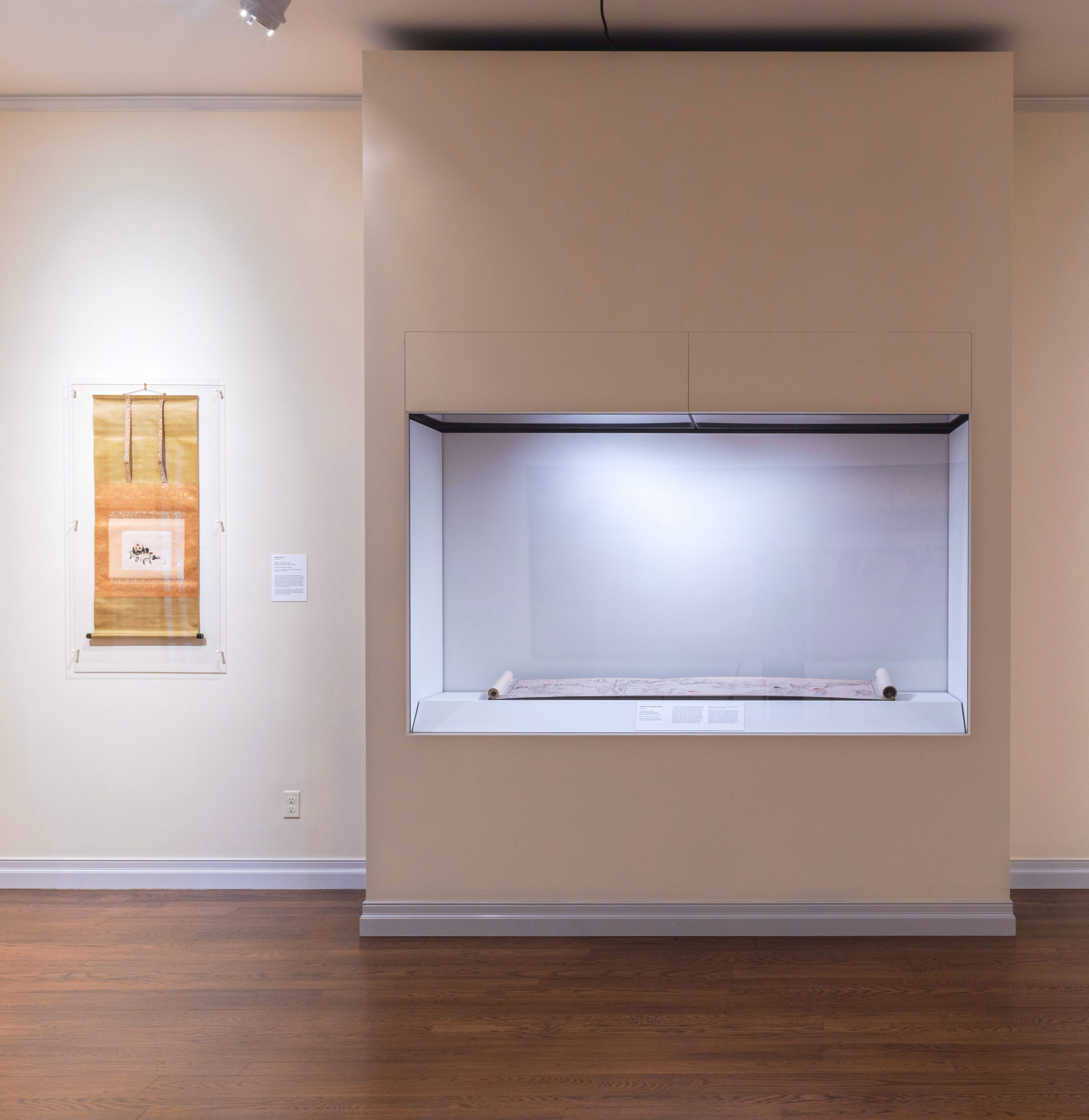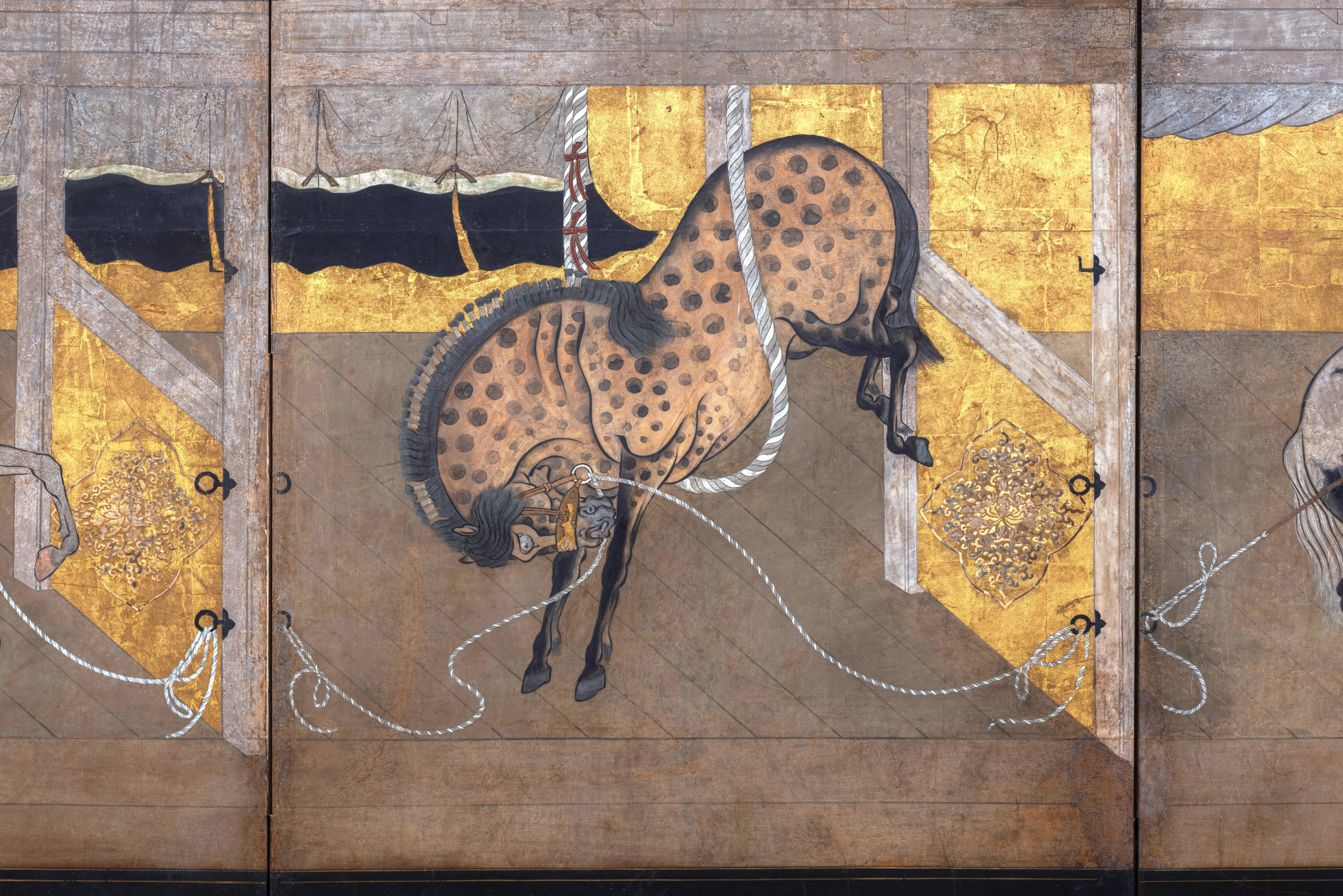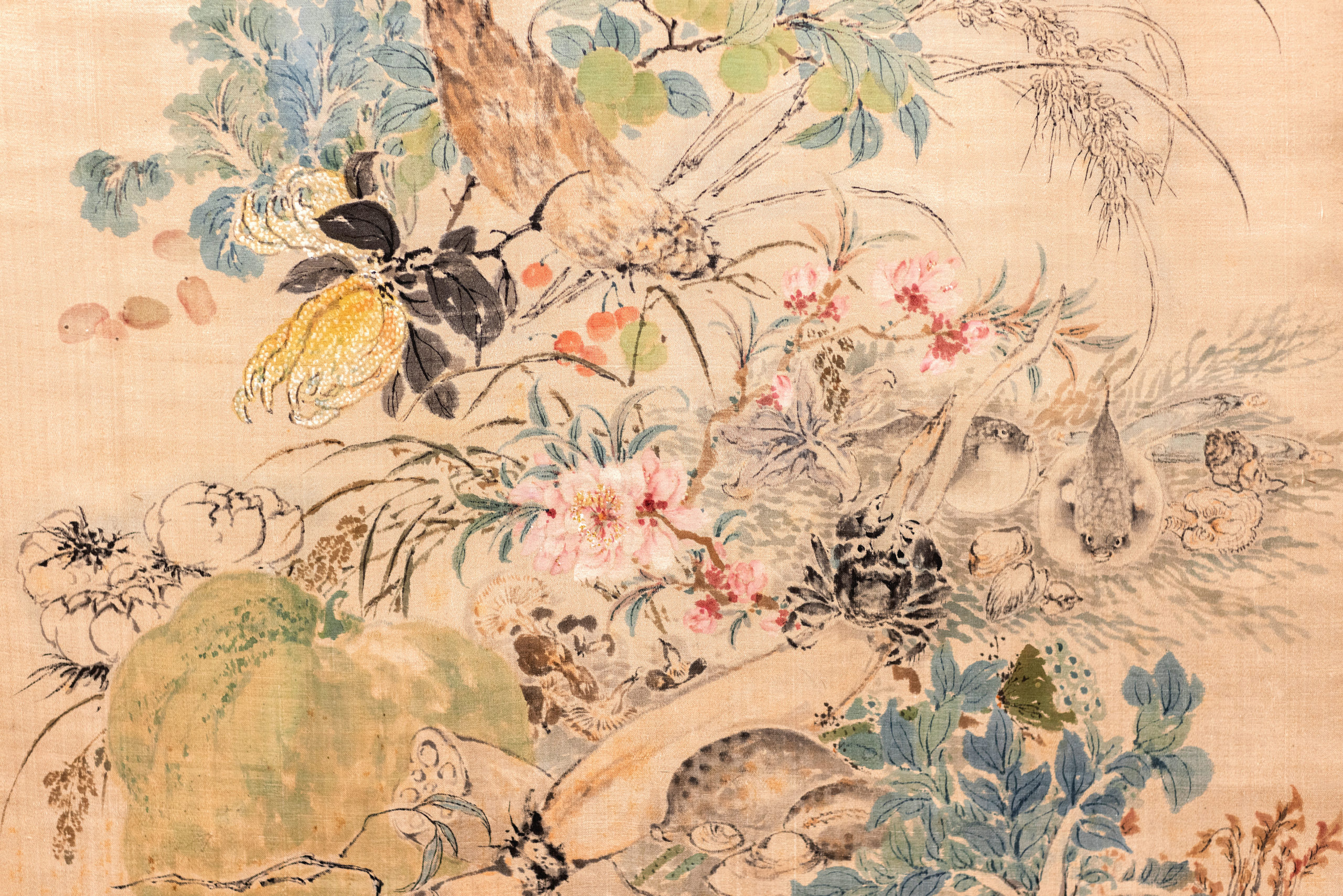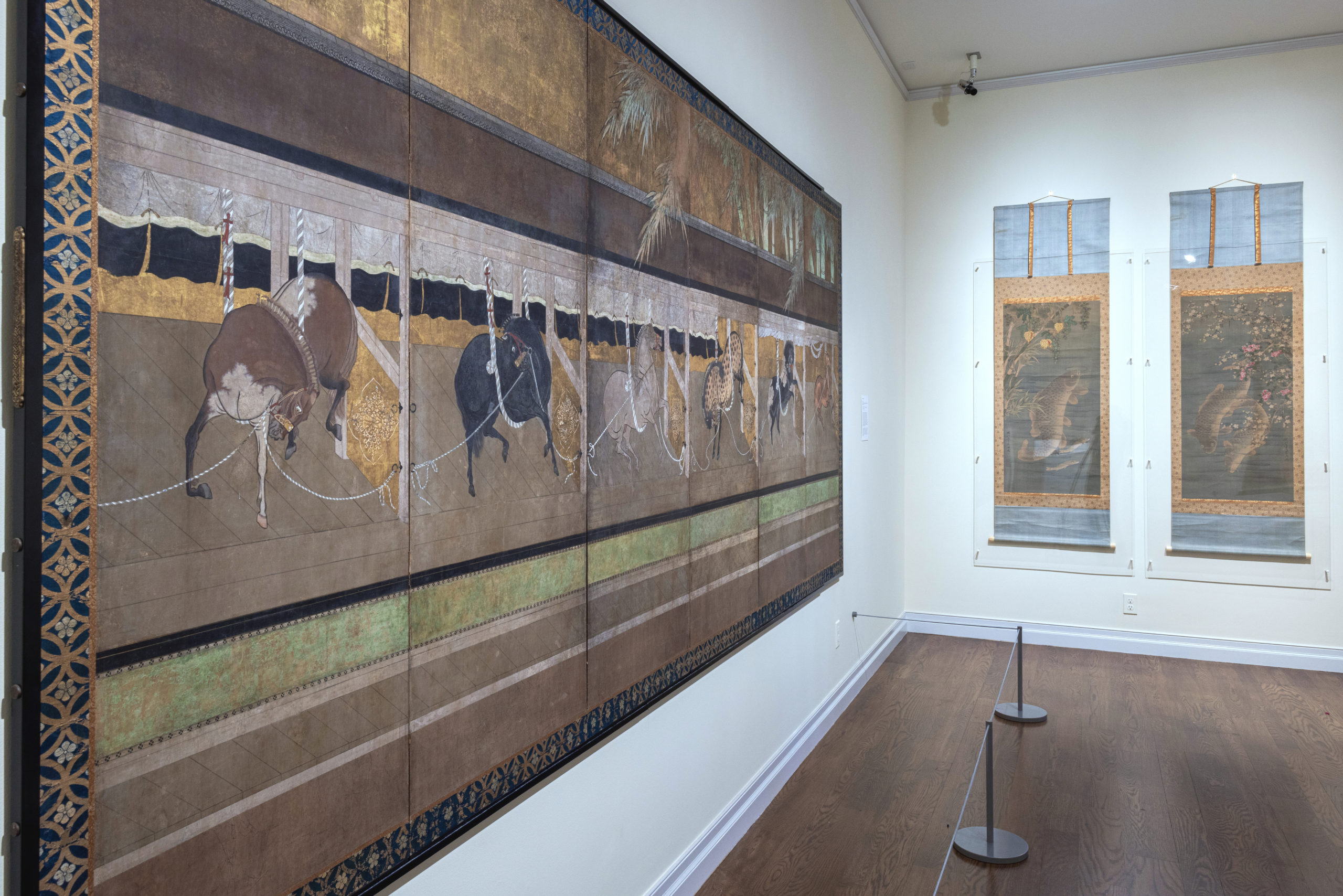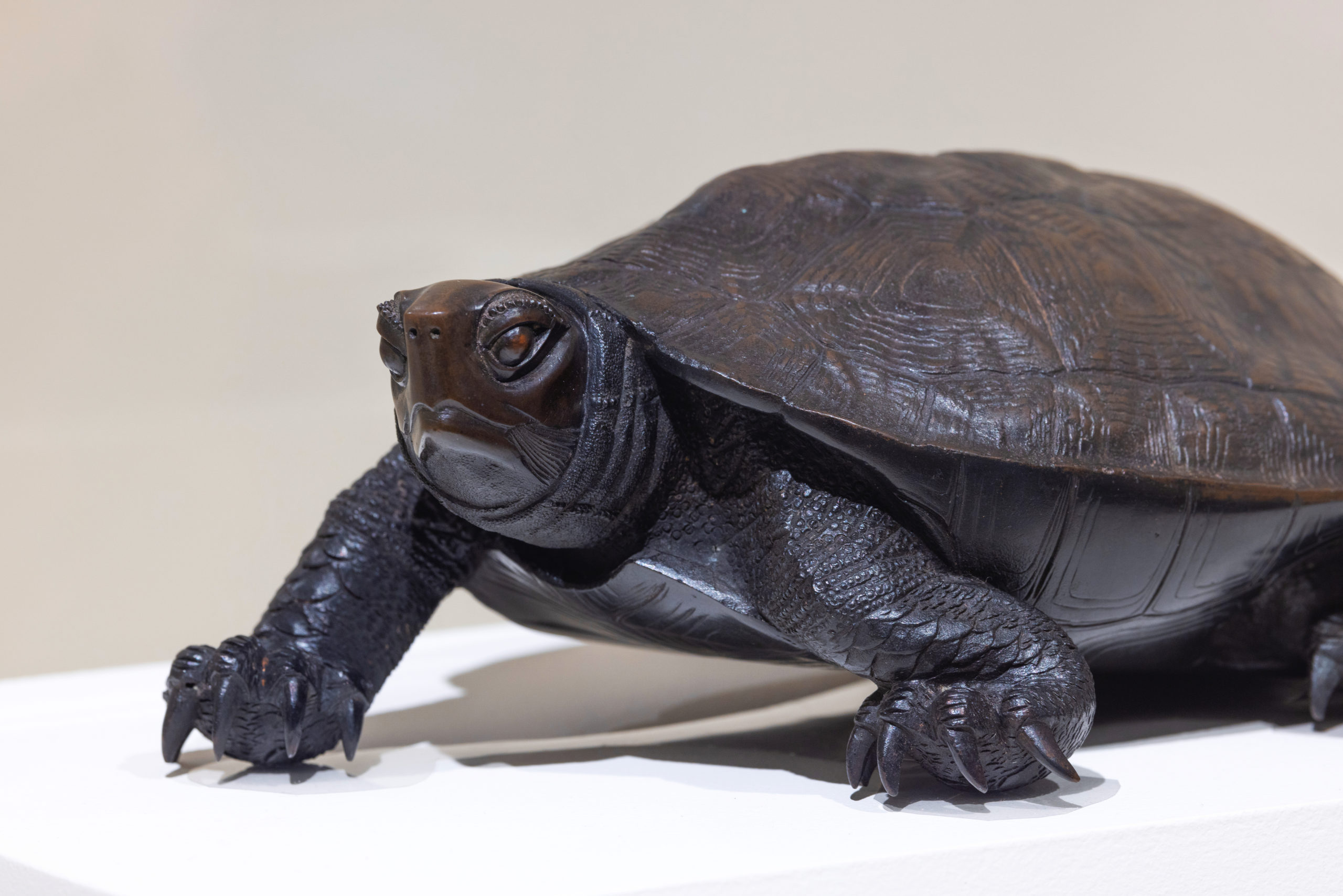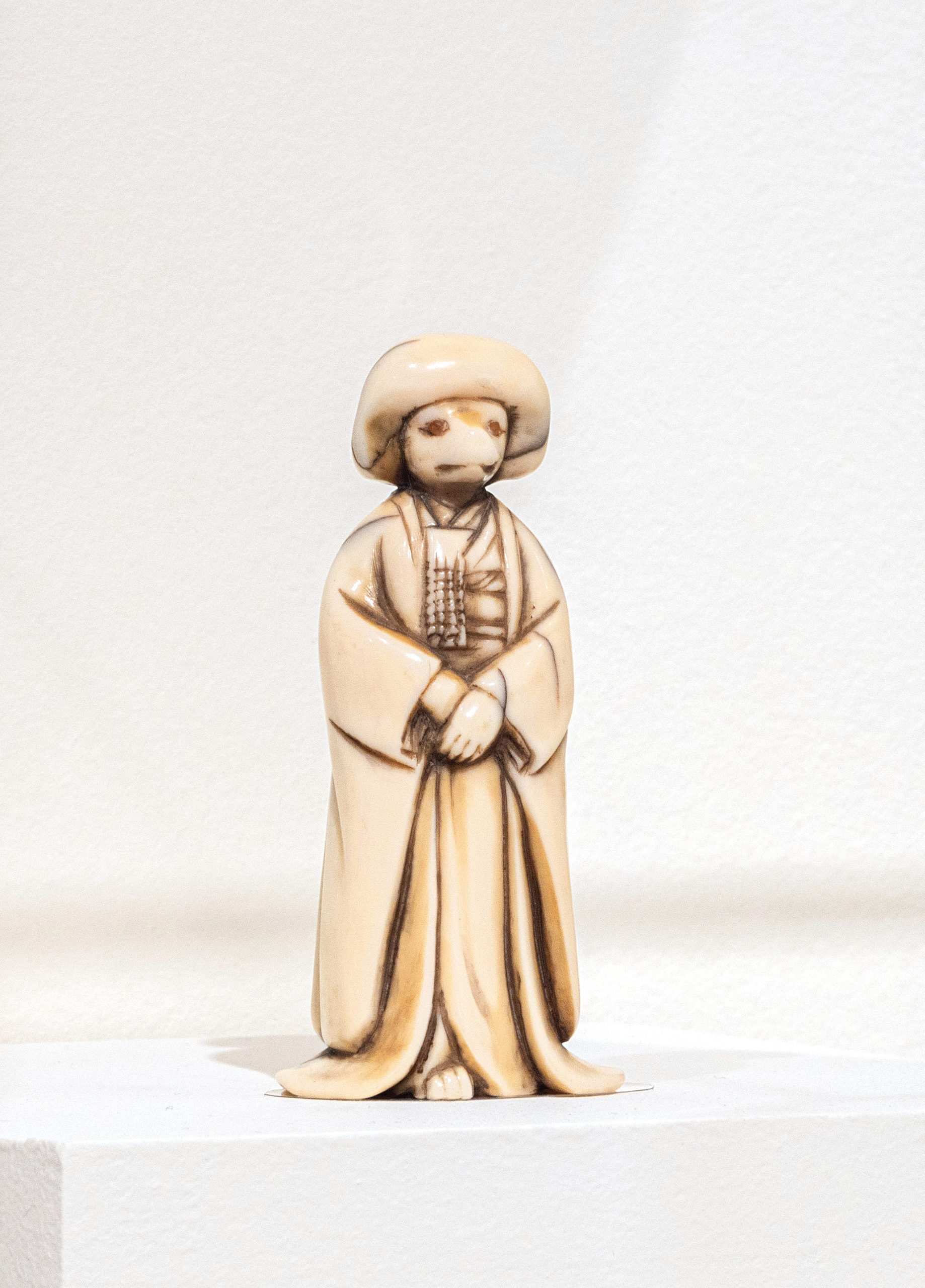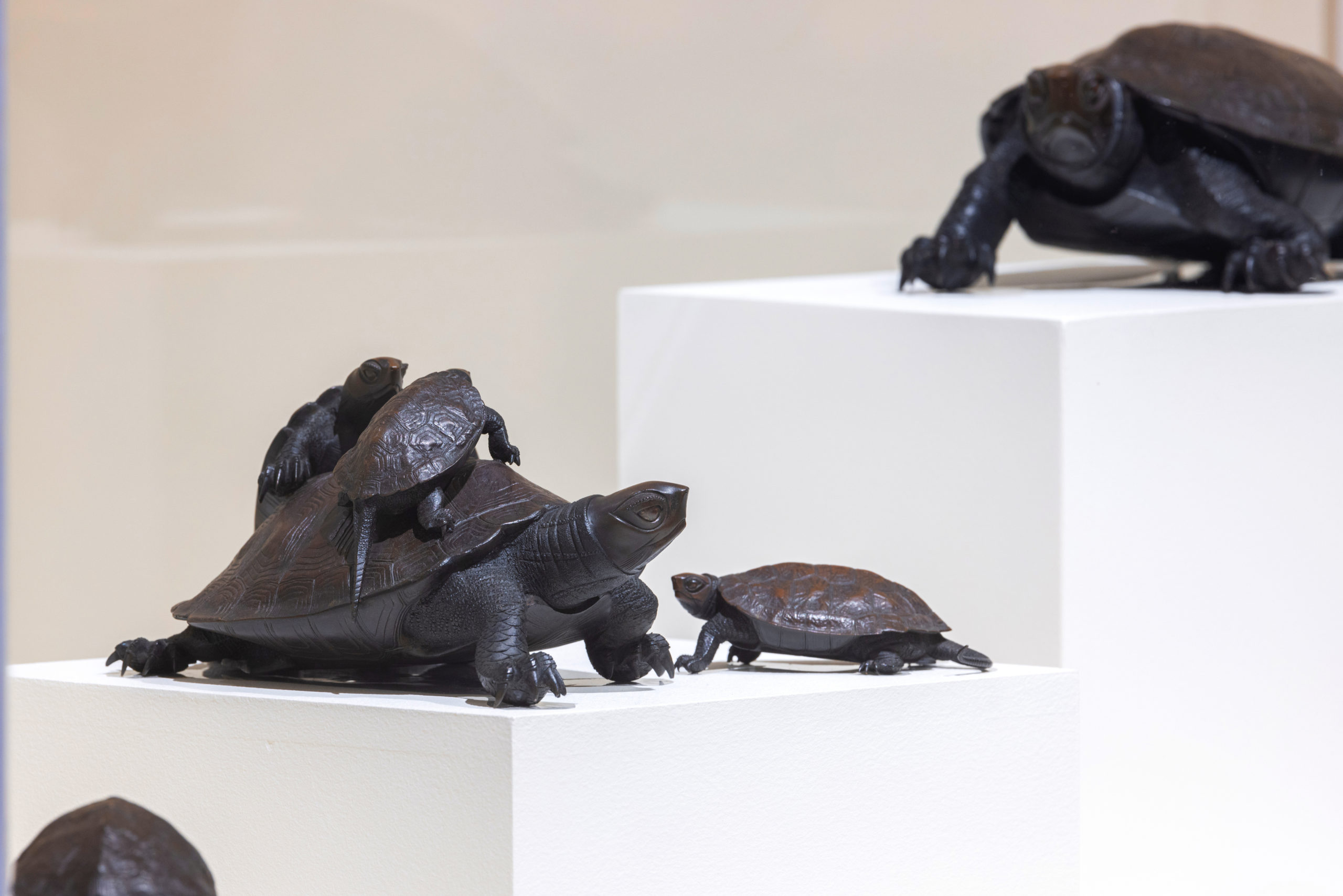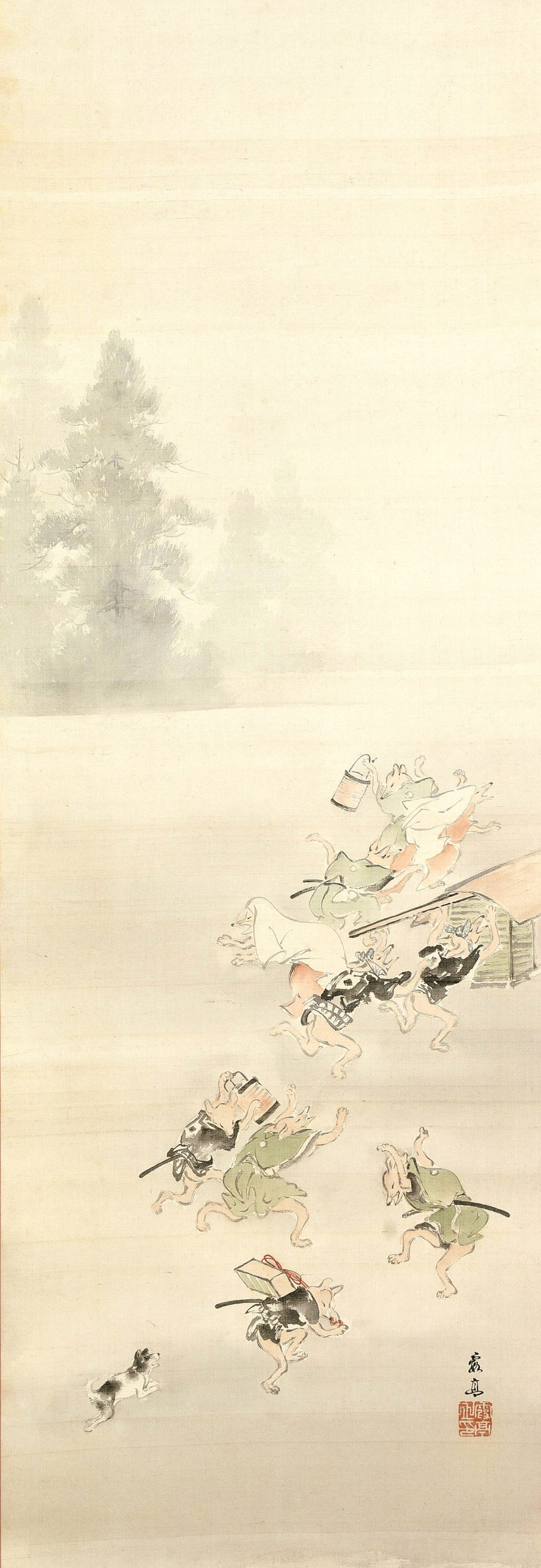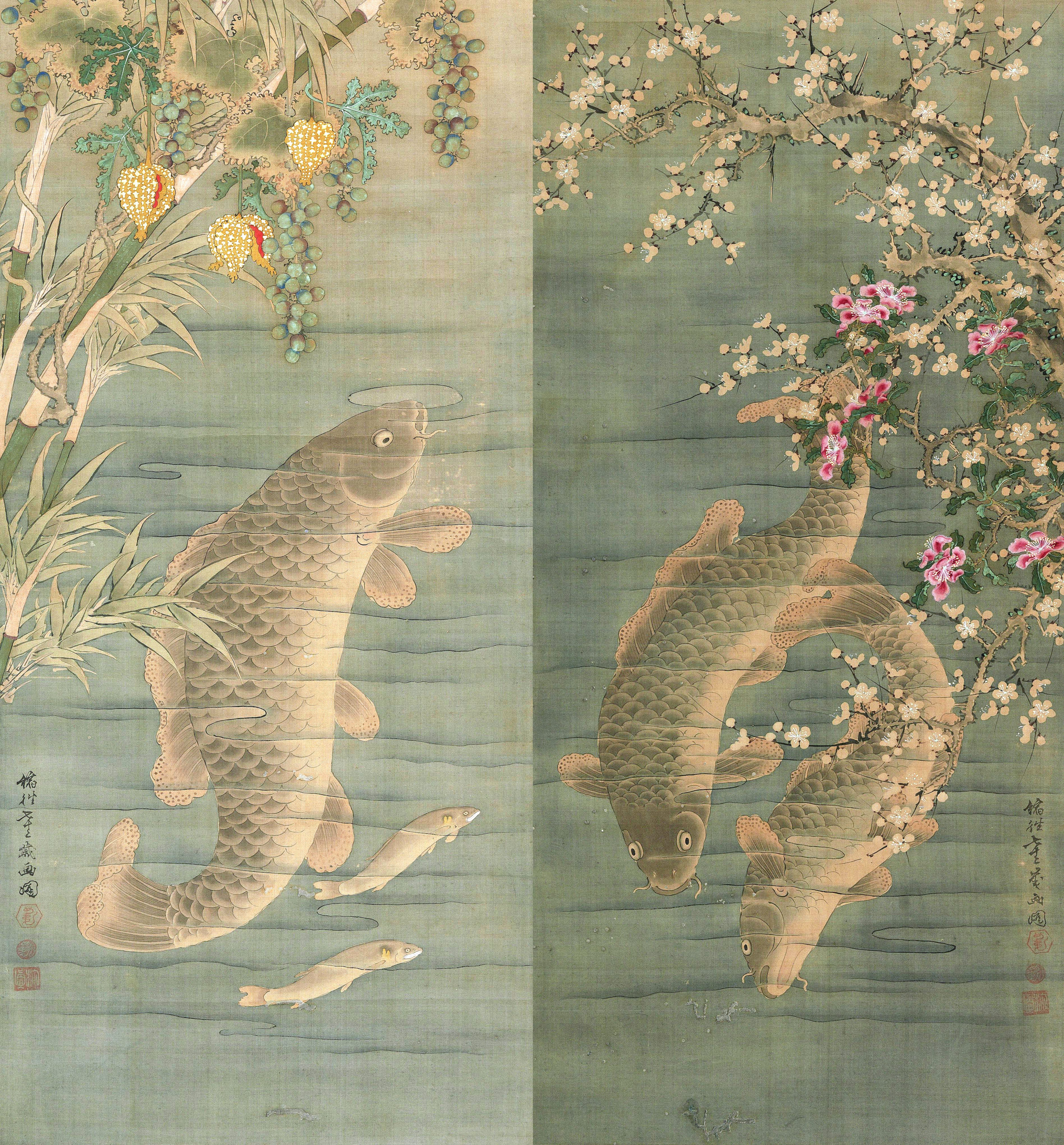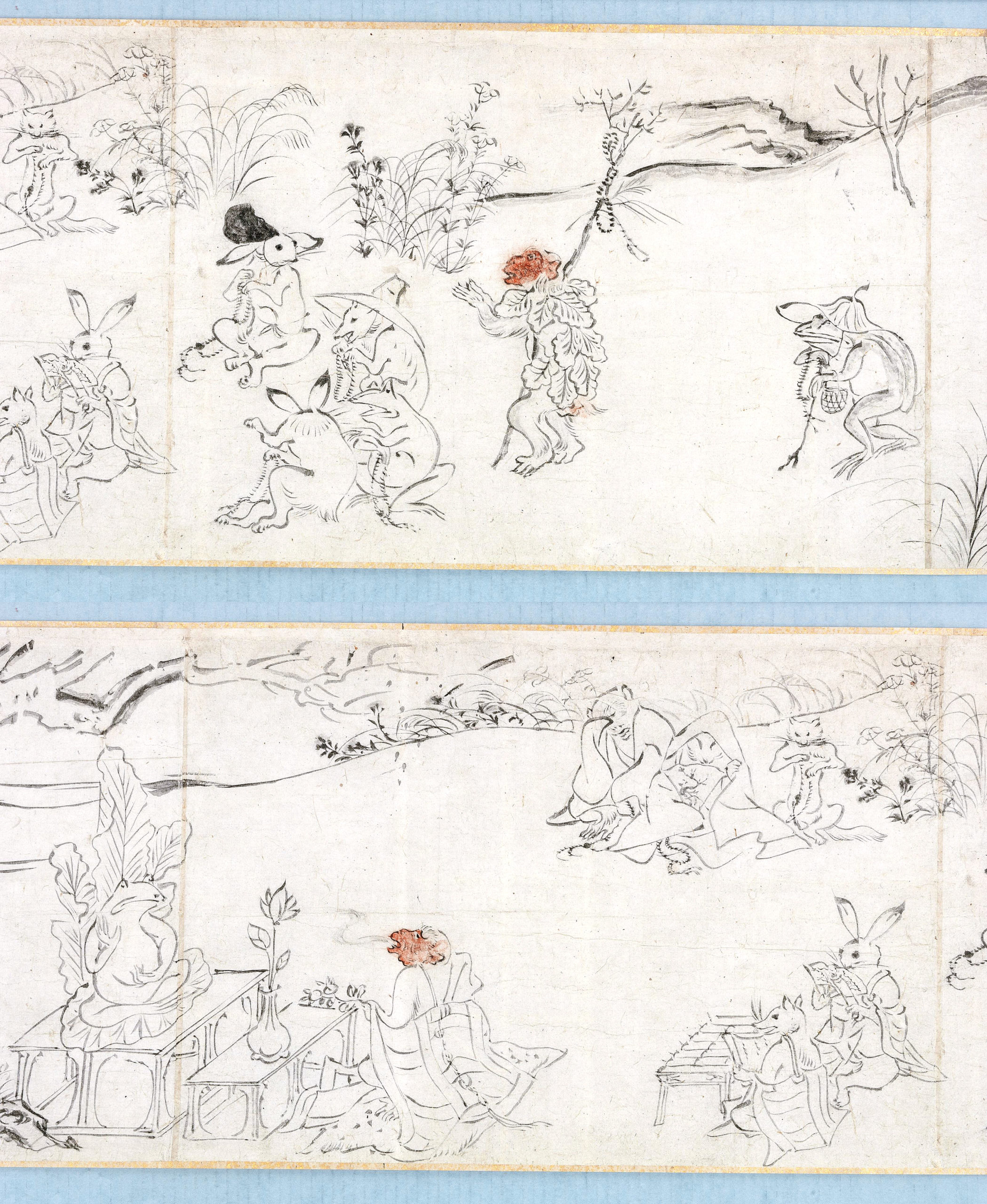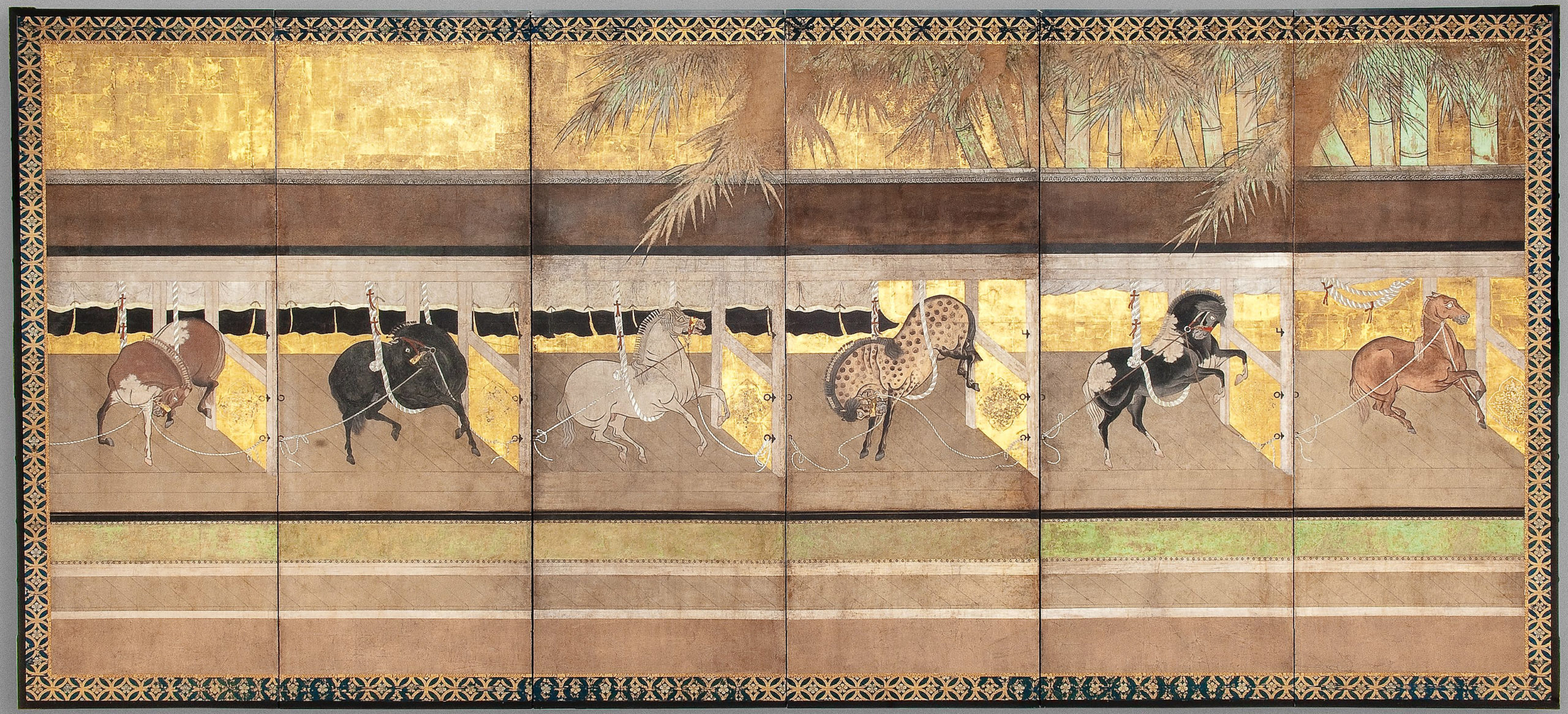
“Stable,” attributed to Tosa Mitsunobu (1434-1525), Momoyama period (late Sixteenth to early Seventeenth Century), six-panel screen, ink, colors and gold on paper. Museum purchase, 1975.
By Z.G. Burnett
HONOLULU — Animals in art are rarely just animals. They are often rich in cultural associations that reveal as much about human society as the natural world. “Animals in Japanese Art,” on view at the Honolulu Museum of Art (HoMA) through July 23, showcases a menagerie of paintings and sculptures from the museum’s permanent collection that date from the Fifteenth Century. The humorous badgers, mysterious foxes and fearsome lion-dogs featured in the exhibition consider relationships to the environment, highlight topics in Japanese history and function as commentaries about the curious behavior of humans.
“Apparent in sources as diverse as Aesop’s fables and contemporary cartoons, depictions of various species raise our awareness about the prevalence of nature,” said Shawn Eichman, curator of Asian art at HoMA. “Japanese art is abundant in such imagery, from paintings made for the highest levels of court to humble toggles intended for daily use. These representations of the wild encourage us to reflect upon how we interact with other lifeforms and our environment in general.”
“Animals In Japanese Art” was inspired by two objects attributed to Tosa Mitsunobu (1434-1525), the handscroll “Frolicking Animals” and the six-panel screen “Stable.” Tosa was head of the Imperial Painting Bureau for five decades, defining the artistic sophistication of the court and making a profound impact on Japanese aesthetics. Like most works of the Tosa school, both are unsigned but confidently attributed. According to Eichman, “The exhibition is centered on these two paintings, with other artworks from HoMA’s collection that expand upon the ways in which animals served as subjects in the arts, ways in which they symbolized different aspects of Japanese culture and different levels of society.”
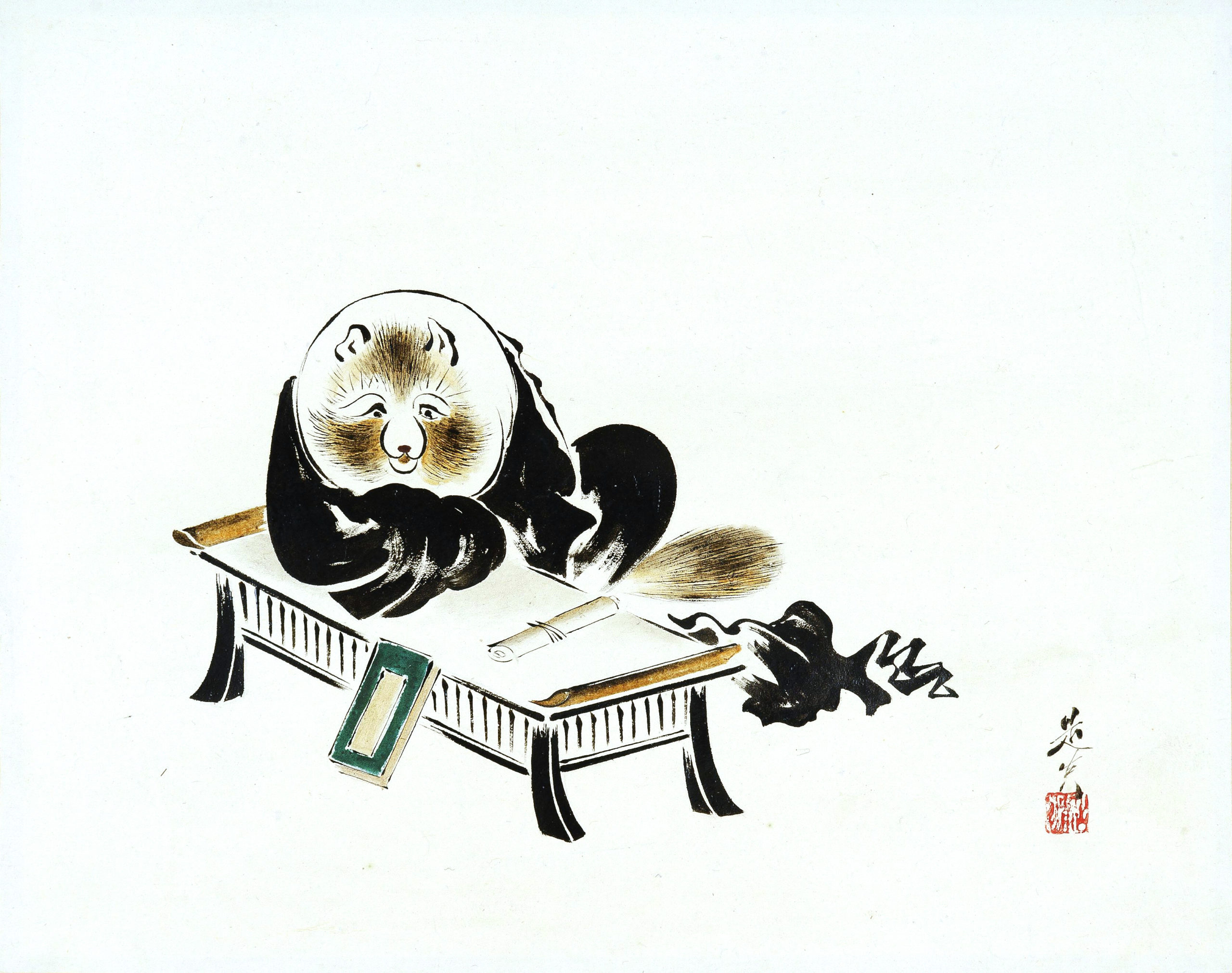
“Badger Studying a Sutra,” Shibata Zeshin (1833-1872), Edo period (Nineteenth Century), hanging scroll, lacquer on paper. Gift of the James Edward and Mary Louise O’Brien Collection, 1978.
One of the treasures in HoMA’s collection, “Frolicking Animals” was attributed to Tosa by Kano Tan’yu, the central figure in establishing the Kano School, an important artistic movement of the Edo period. At some point after this evaluation, the work was separated into two scrolls. The first was acquired by HoMA in 1954 with the assistance of collector Robert Allerton, and the second was donated to the museum two years later by dealer Yamanaka Jiro, enabling HoMA to reunite and remount the scrolls, for the first time in presumably a century or more.
The Tokyo National Museum recently displayed the scroll alongside original Twelfth Century paintings that inspired it. “Frolicking Animals” showcases a theme in Japanese art that shows animals in human dress, playing games, dancing and making music and even conducting a religious ceremony.
Many subjects in this exhibition possess symbolic meaning that refer specifically to Japanese history and mythology. One such rarity is the screen “Stable,” an exquisitely painted six-panel screen depicting horses in a stable from the Momoyama period, late Sixteenth to early Seventeenth Century. “Like most Tosa School works, it is unsigned, but it can be confidently associated with the studio of the third head of the school, Tosa Mitsuoki,” Eichman adds. As its title suggests, “Stable” depicts a stable of horses, and raises interesting connections between horses and Imperial offerings to Shinto shrines. Horses, which commonly represent wealth and power, are believed to carry messages to the heavens in Shinto Buddhism. Horses carry some similar cultural associations in Japan to other cultures, being the traditional purview of the wealthy and powerful elite. These divine horses are sometimes painted on popular votive panels, or ema, and donated to shrines. The exhibition includes one such plaque that is dated to 1868 when, after centuries of military dictatorship, the Imperial family was restored to power and ushered in the modern age.
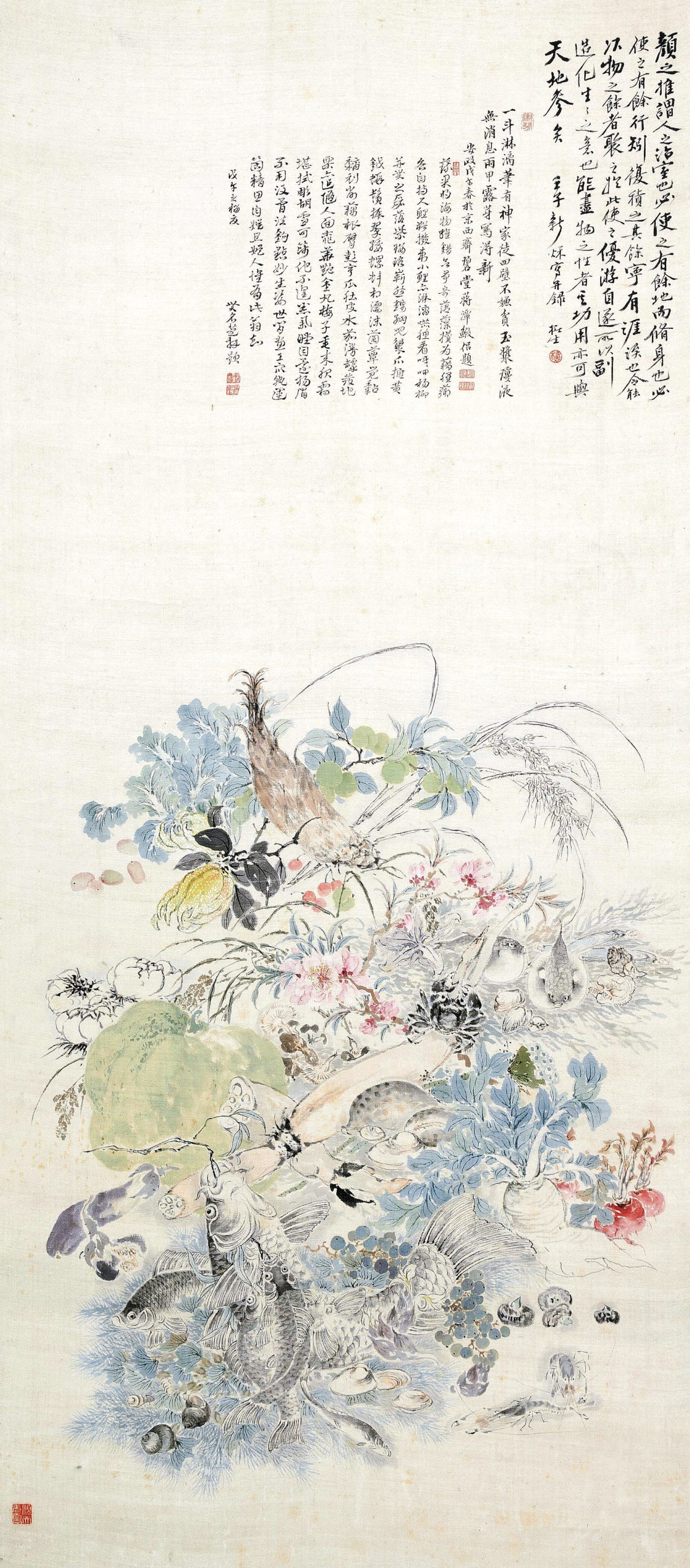
“Flowers and Sea Creatures,” Tsubaki Chinzan (1801-1854), Edo period (Nineteenth Century), dated 1852, hanging scroll, ink and color on silk. Gift of Tajima Mitsuru, 1969.
When asked what his favorite piece in the exhibition is, Eichman answered, “Both ‘Frolicking Animals’ and ‘Stable’ are paintings of great historical importance… [The commentary of ‘Frolicking Animals’] on human nature through the lens of anthropomorphized animals is endlessly fascinating. It is especially exciting for me to be able to display it together with ‘Stable,’ and have artworks associated with the two most important artists of the Tosa School in the same exhibition.”
Other exhibition highlights include “Badger Studying a Sutra,” “Flowers and Sea Creatures” and “Black Carp,” hanging scrolls from the Edo period and additional paintings rarely on display. In Japanese folklore, it was believed that some magical animals could take on human form. Foxes and badgers, for example, were thought to live remarkably long lives that allowed them the time to cultivate this shape-shifting practice to its perfection. Badgers were generally portrayed comically as good-natured gluttons. In contrast, foxes were clever, mysterious and even menacing. Through artworks ranging from lavish paintings made for the highest levels of society to humble netsuke belt toggles, viewers are invited to explore the stories and meanings behind these animals, offering a novel, humorous perspective on human concerns.
The Honolulu Museum of Art is at 900 South Beretania Street. For more information, www.honolulumuseum.org or 808-532-8700.

